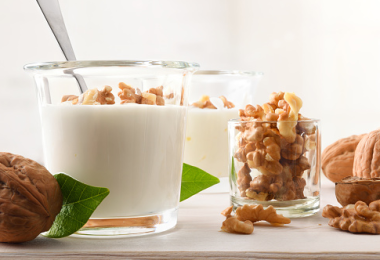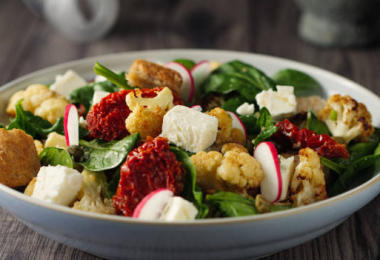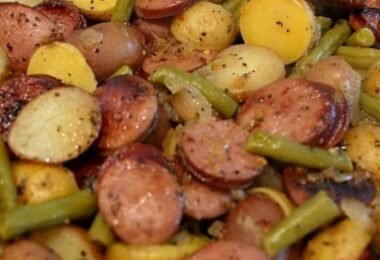There are specific foods, such as watermelon, oats, eggplant, and other similar items, that can aid in weight loss, intestinal transit improvement, fluid retention reduction, metabolic acceleration, and calorie burning.
They should be consumed on a daily basis in conjunction with a balanced diet that is low in sugar, sweets, fat, fried and processed foods as well as high in fibre. Apart from that, they should be coupled with regular physical exercise, such as walking for one hour at least three times per week for at least one hour.
We’ve compiled a list of ten foods that are low in calories and that are incredibly beneficial in the weight-loss process.
- Pear
Pears are high in water content and contain 71 percent insoluble fibre, which contributes to a more satisfying feeling of fullness while also improving intestinal transit. Additionally, the natural sugar included in this fruit reduces the desire to consume sweets and raises just a small amount of sugar in the blood, which helps to reduce hunger and avoid the consumption of high-calorie, sugary foods.
Consumption instructions: It should be consumed 20 minutes before main meals in order to aid in weight loss.
- Cinnamon
Cinnamon is an aromatic spice that has been shown to have a thermogenic impact on the body, raising metabolism and accelerating the burning of body fat in some studies.
Besides this, cinnamon may also be beneficial in lowering blood sugar spikes and increasing insulin sensitivity and decreasing insulin resistance, all of which are associated with weight loss. Among the other foods that have thermogenic qualities are ginger, red pepper, coffee, and hibiscus water, among others.
Consumption: It can be easily included into a variety of dishes, including fruits, juices, smoothies, coffee, tea, cakes, and whole-grain cookies.
- Eggplant
Aside from the fact that eggplant is a low-calorie fruit (100 grammes contain only 24 kcals), it is also high in fibre, which aids in the regular functioning of the gut, combatting bad cholesterol and poor digestion, and creating a feeling of fullness.
Furthermore, because it has a high concentration of water, vitamins, and minerals, it helps to maintain fluid balance.
Consumption method: It is possible to produce eggplant water and drink it throughout the day instead of drinking plain water. It can also be used as a salad ingredient and served as chips, stuffed vegetables, or in soups and sauces.
- Brown rice
Brown rice, as opposed to white rice, is high in fibre, which helps to promote fullness while simultaneously decreasing the amount of food consumed. It is also highly high in B vitamins, zinc, and selenium, all of which are antioxidant minerals that help to increase blood circulation, concentration, and recall.
Consumption methods: It is critical to keep the amount of food consumed under control since, while it is necessary, if it is consumed in excess, it can have the opposite impact of what is intended. In order to determine the appropriate serving size, it is best to consult with a nutritionist who will do an evaluation and recommend a nutritional plan that is personalised to your needs.
- Oatmeal
Because oats are exceptionally high in soluble fibres and proteins, they work as a catalyst in the digestive process and also help to balance the gut. In addition to this, its consumption helps to regulate blood sugar levels and lower cholesterol levels, making hunger appear to come more slowly as a result.
It should be ingested in the following ways: Because oatmeal is so adaptable, it can be served as atol or porridge, as well as sprinkled on chopped fruits, smoothies, and yoghurt, and it can be used in the preparation of baked goods such as cakes and cookies.
- Wheat bran
Fiber-rich wheat bran, with 12.5 g of fibre per 100 grammes of weight, is low in calories and can be used to treat constipation, assist manage blood sugar levels, and promote satiety.
It should be ingested in the following ways: This ingredient can be used in any recipe to limit fat absorption in the intestine because it has a mild flavour and does not alter the taste of the food.
- Strawberries
Strawberries, in addition to containing few calories, are high in fibre, which helps to control blood sugar levels and promote the feeling of satiety, so reducing the number of calories consumed and increasing weight reduction and weight loss. It also has a high concentration of vitamin C, folate, and phenolic compounds, all of which have antioxidant and anti-inflammatory effects.
Consumption: This fruit can be consumed whole or in juices, and it can also be used to make detox juices to aid in the improvement of metabolic function.
- Green tea
Green tea has thermogenic qualities and boosts metabolism, which is due to its high caffeine content, which is a stimulant that aids in fat burning during exercise. This is in addition to being high in catechins, which are potent antioxidants that aid in the improvement of metabolism.
Preparation Instructions: It can be taken as capsules or as a tea; nevertheless, it is best used under the supervision of a physician or a nutritionist. To make the tea, combine one tablespoon of green tea with one cup of boiling water and allow it to steep for ten minutes before serving.
- Flaxseed
Flaxseed is high in antioxidants and omega-3 fatty acids, which help to lower cholesterol levels and reduce inflammation in the body, so aiding in the weight-loss process. Aside from that, it contains a high amount of fibre, which helps to aid digestion and promote fullness.
It should be ingested in the following ways: It is preferable to take flaxseed grains crushed or in the form of flour, and 1 or 2 teaspoons can be added to a variety of foods such as cereals, salads, juices, smoothies, and yoghurt. Bread, cakes, and pastries can all benefit from the addition of flaxseeds to the recipe.
- Legumes
Protein and dietary fibre are found in abundance in legumes such as beans, peas, lentils, and chickpeas, which helps to promote satiety while also preventing constipation.
Consumption methods include: Consuming four tablespoons per day, which is about comparable to half a cup, is sufficient to reap the benefits of this plant, especially when paired with brown rice, which results in a high biological quality protein when mixed with other grains.












